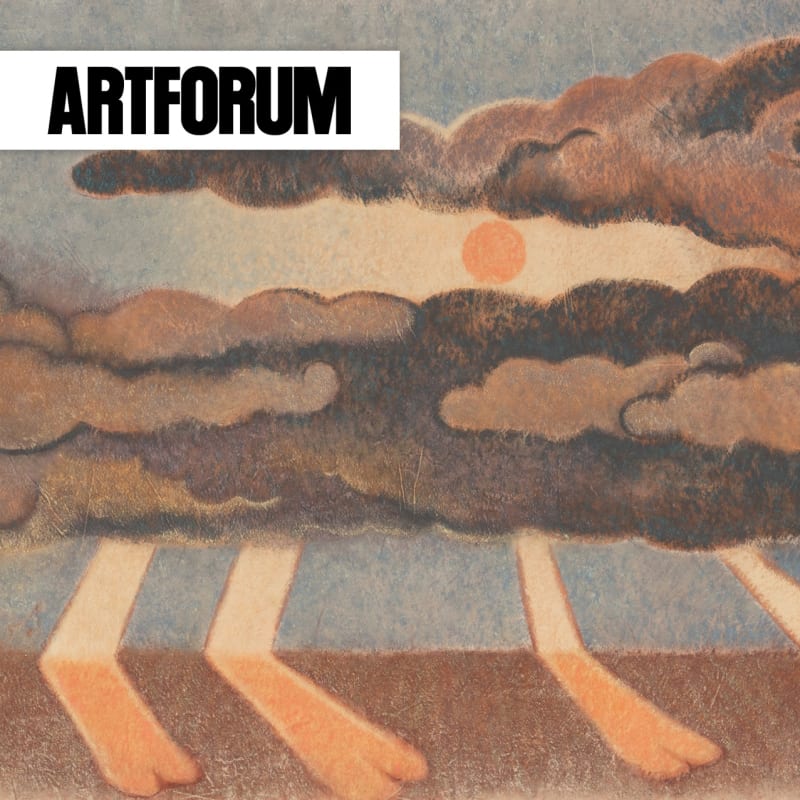BY DANIEL CULPAN
If the artist’s vocation is to be disciplined and solitary, alone with their tormenting visions, then what better model than Saint Anthony? The monastic figure in the desert, besieged by the devil’s temptations, has proved fertile subject matter for both artists and writers, from Matthias Grünewald to Leonora Carrington, the latter of whom came to that subject by way of Gustave Flaubert’s 1874 prose poem, illustrated by Odilon Redon.
It was Flaubert’s work that served as the inspiration for Martyn Cross’s recent “O happiness! happiness!” In fifteen oils on canvas, the artist invoked a sequence of frequently surreal and comically grotesque revelations that riffed on this religious parable of devotion and ecstatic suffering. In Let Us Go Hence (all works cited, 2022), a crescent moon cut from a glimpse of blue sky became a beady eyeball, framed by cumulus clouds like a mop of blond hair. A vaporous white-blue trail below forms a fingerpost pointing onward. Similarly, in Murmur of Things Divine, twin banks of smoke—the paint dabbed and cottony—poured from a mouthlike vent in a mountain range, forming a pair of giant demiurgic hands.
Clouds, eyeballs, hands: These motifs appear again and again in Cross’s paintings, like endlessly recurring Jungian archetypes. The sun moves from the mystical (as in Monument, a white-hot orb painted on flax, recalling a head bent in genuflection) to the comical (the two cracked eggs of Double Yolker rising over marshy patches of green). Dense with allegorical oddity, many of Cross’s works demand double takes, even a kind of divination. In a nod to Surrealist forebears Salvador Dalí and Max Ernst, Elsewhere made a strange landscape out of a giant shrimp, a hairlike thicket of reeds, and a purple blob of mountains. From another angle, we saw the nose, luminous green eye, and bearded chin of an ogre’s face forming a kind of reef beneath the shoreline. Stone Meats depicted a foot-shaped estuary that appears to morph into the night sky at the left. The night side features a sickle moon for a toenail, while a sun shines on the right. Nature, both inverted and anthropomorphized, appeared everywhere in these paintings. Things were never quite what they seemed.
Cross also plays with tricks of scale and placement, juxtaposing miniature curiosities with sprawling canvases. The creepy, wide-eyed, golem-meets-jack-in-the-box Crackless Egg, painted on a six-by-four-inch support, hung low on the wall, while the monstrous green-bearded mouth of Voice of the Worm forced you to stand on tiptoe and peer upward. Two gargantuan pieces on unstretched canvas dominated the show: A Tomb for Immortal Ascension and Flodan Blaed. Both feature a palette full of ochers, browns, and terra-cottas, thus appearing almost primitive and unearthed. In the former, beams of sunlight break through black-eyed clouds, hitting the ground like four hoofed legs. Most of the latter, a canvas taking up an entire wall, is filled by the image of a giant headless fossil of some peculiar human/beast vertebrate. Its fingers claw the earth. Aboveground, perspective shifts, with a mountain range smudging away like smoke, dwarfed by the bones below. The devil, after all, is in the details.


